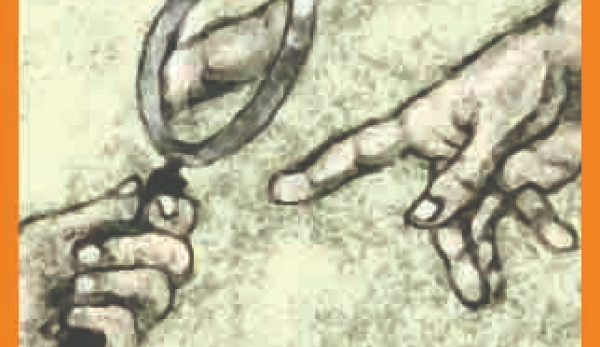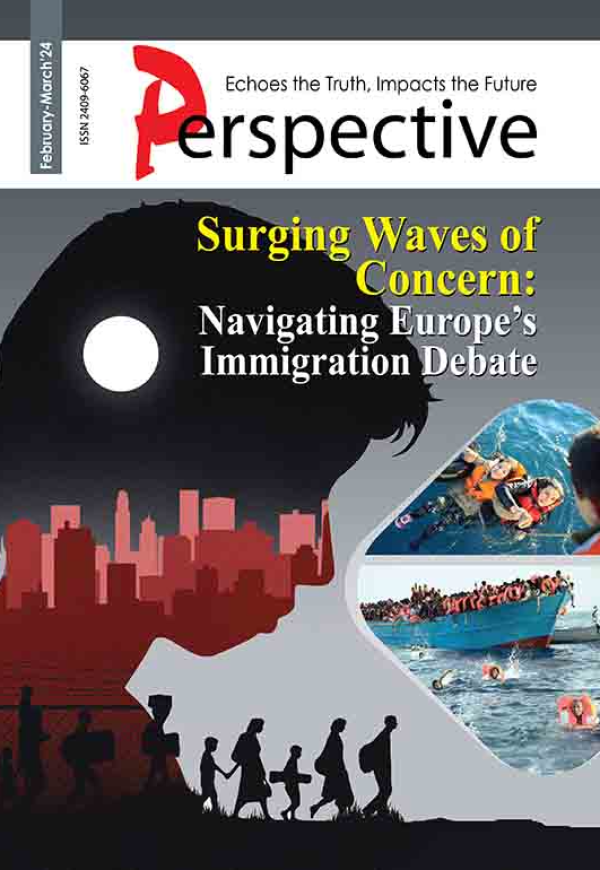What Does the Reason Say? : Ibn al-Nafīs’ Problematization of Natural Reason
What Does the Reason Say? : Ibn al-Nafīs’ Problematization of Natural Reason
What Does the Reason Say? : Ibn al-Nafīs’ Problematization of Natural Reason

Introduction
The thirteenth-century polymath Ibn al-Nafīs’ (d. 1288) found himself in an environment where the falasifa privileged themselves by relegating “theological sources” as secondary and, even, somewhat depraved. The basic argument of the falasifa perhaps could be summarized this way: reason itself is enough in unearthing the truth, and religion is for simpletons, if not entirely superfluous. Ibn al-Nafīs’ issues a rejoinder to this narrative in his Risālat Fādil ibn Nātiq (The Book of Fadil ibn Natiq), hereafter Risālat, also known as al-Risālat al-Kāmiliyya fī al-Sīrat al-Nabawiyya (The Treatise Relating to Kāmil on the Life-History of the Prophet).
In this essay, I propose a novel reading of Ibn al-Nafīs’ work and argue that his work has problematized the category of reason itself by denying it an independent, extra-contextual existence. In other words, it is my claim that the Risālat demonstrates that reason itself is subject to the social environment in which it is thought about, communicated to one another, and its boundaries are (re-)negotiated. One important caveat is that I am not setting out to discover Ibn al-Naf’s intent, that is, to say whether he indeed did intend to offer this particular reading that I am proposing.
The radical potential of such a reading of Ibn al-Nafis’ Risālat lies in denying any race, epistemology, socioeconomic class, normative orientation, or scholarly class, to name only a few groups, any (false) sense of superiority through an exclusive claim to objective, pre-political, natural facts. This anti-foundationalist reading of the Risālat forces grand claims to natural truth to, firstly, provincialize themselves and, secondly, enter a more honest conversation with competing epistemologies. In the contemporary world, this reading of Ibn al-Nafis’ disrupts the dominant trend of marshalling the logic of natural reason to marginalize other epistemologies.
The first section of the essay sets the stage; it outlines the background against which Ibn al-Nafis’ produced the Risalat, as well as a synopsis of the text. The second section deals with Ibn al-Nafis’ unmasking reason’s social groundedness, to the point that the reason versus revelation dichotomy collapses. In the final section, I underscore the importance of such a reading of Ibn al-Nafis’ work in guiding our approach to truth and ways of knowing it, especially vis-à-vis the question of power.
Setting the stage
Ibn al-Nafis found himself in an environment wherein the falasifa, beginning with Ibn Sina and drawing upon the Greek philosophical tradition, privileged human reason over revelation. They insisted that truth is knowable through reason alone and that revelation is at best a crude attempt at transmitting it to the uninitiated masses. They denied that revelation is a valid source of knowledge (Marmura 1983: 87–102, Rahman 1958: 42–45, Abrahamov 1998). The Andalusian scholar Ibn Ṭufayl (d. 1186), working within this tradition, advanced a theory of rational mysticism in which religious truths, including “a mystical vision of God,” are harmonized with the discoveries made by falsafa, but revelation ultimate remained redundant (Fancy 2009: 220)
Ibn Ṭufayl’s Ḥayy ibn Yaqzanis is the text against which Ibn al-Nafis’s Risālat set itself up. As such, an account of the Risālat must begin with an appreciation of Ibn Ṭufayl’s work. Ibn Ṭufayl’s Ḥayy ibn Yaqẓān is a story of Ḥayy, a human who naturally comes into being—i.e., without being born to human parents—on an isolated island, although an alternative version of Ḥayy’s birth contained in the story says that he is abandoned by his parents. On the island, a gazelle took care of Ayy until the former died. Ḥayy, without the knowledge of human language, embarks on a journey of rational inquiry, leading him to a range of discoveries, including the knowledge of the existence of the Creator. Through reason alone, he also deduces the necessity of worshipping the Creator. Suddenly, Ayy comes into contact with human society as a ship reaches the shore of the hitherto solitary island. His interaction with humans teaches him the human language and religion. He concludes that the truth he discovered through his independent rational inquiry is in agreement with the essential truth encapsulated in religion, although the former is a higher and purer kind of truth. Travelling to human society, Ayy hopes to enlighten his fellow humans but is frustrated by the latter’s inability to outgrow the so-called literalism of the revealed religion. He then self-exiles himself to his island (Ibn Tufayl, 2009).
Kāmil, the protagonist of Ibn al-Nafis’ Risālat, shares a number of similarities with Ḥayy. Like Ḥayy, Kāmil also naturally comes into existence on an isolated island without any human parents. The text does not provide any alternative versions of his birth. Kamil then observes his surroundings and makes a series of discoveries, including the existence of God. Like Ḥayy, Kāmil also encounters a group of humans with whom he travels to human society. This is the point where Kāmil’s path diverges from that of Ḥayy. Although Kāmil’s self-made discoveries perfectly align with what he comes to know about the revealed religion of human society, he learns a lot more from that society about the specificities of that religion, with which he rationally agrees after reflecting upon them. The text does not mention anything about Kāmil’s return to a solitary life. It does not elicit the idea that Kāmil thinks ill of the knowledge gleaned from his interaction with humans, who had access to that knowledge through the revealed religion. In other words, the superiority of Ḥayy and his access to purer knowledge through pure reason vis-à-vis commoners and their access to dumbed-down knowledge through revelation is absent in Ibn al-Nafis’ Risālat (al-Nafis 1968; see also Fancy 2009, Lauri 2017).
With this concise background in mind, I turn to the issue of problematization of the reason-revelation binary in Ibn al-Nafis’ text.
Problematizing the reason-revelation binary
The striking similarity, as well as the differences, between Ibn al-Nafis’ Kāmil and Ibn Ṭufayl’s Ḥayy is not lost on scholars. While Ḥayy is often described as a self-taught philosopher, Kāmil is termed a self-taught theologian (Fancy 2009: 220–21).
Ibn Ṭufayl’s Ḥayy exemplifies the limits of the revealed, organized religion and scholarly class that the religion gives birth to and, in turn, is guarded by. Ḥayy promotes a mode of knowing that, notwithstanding its much-stressed conformity with the essence of the revealed religion, is independent of any prophetic revelation. Not only is the truth made knowable through pure reason, it is also posited as a superior form of truth—truth in its purest form—in contrast with the dumbed-down truth of the revealed religion, which is for the laymen (Germann 2016, Fancy 2009).
Kāmil, on the other hand, inverses the equation. Although Kāmil, like Ḥayy, makes rational inquiries, his discoveries can go within the metaphysical realm only as far as rationalizing the existence of the Creator. The intricate details of the religion reveal themselves to Kāmil only through the humans with whom he comes into contact. This limit is pure reason, which is then juxtaposed with the vast and possibly all-encompassing knowledge of the revealed religion that the humans encountered possessed. Thus, Kāmil’s rationality is indebted, rather than superior, to the revealed religion of human society. In this sense, Fancy (2009) argues that Ibn al-Nafis’ does not merely marshal rationalist arguments in defence of theology but heals and highlights the limits of reason to make theology indispensable to knowledge in its totality. Fancy, therefore, denies that Kāmil’s journey could be reduced to a rationalist defence for theology (2009: 221).
I, however, argue that a more important contribution of the text is how it problematizes the concept of an extra-contextual reason. The description of Kāmil as a self-taught theologian who discovers the orthodox Islamic tenets by using pure reason, a portrait that Nancy is opposed to, should not be dismissed a priori. Kāmil certainly deploys reason to reach the conclusions deemed traditional religious beliefs, prompting the translators Schacht and Meyerhof to declare Kāmil a self-taught theologian (al-Nafis 1968). Even when Kāmil harmonizes his rational thoughts with what he came to know through his contact with human society, he does so by putting reason to use. If it is pure reason that drives Kāmil to organize and reveal religion and Ḥayy away from it, the question that arises is this: what does the reason say? Asked differently, does reason have an existence outside the context in which it appears?
If both Ḥayy and Kāmil are using pure reason but ending up on different shores, it may mean one of the two things. Either the concept of an extra-contextual reason with a defined linear feature is wrong or one of the two protagonists made at least one mistake at some point in their journey that led them to different conclusions. The second scenario presents us with yet another conundrum: how do we reconcile competing claims of reason? If either Ḥayy or Kāmil is being irrational, we can only know it through a recourse to a third, neutral rational approach. But doing so is an impossibility because the existence of yet another rationality would render both Ḥayy and Kāmil’s respective rationalities inferior and incomplete. And if we are to judge both of them against one of their experiences, the result will always favor the individual whose experience we are using as the yardstick. In short, the dilemma here is no less complicated than mediating between competing theologies or telling a soothsayer from a prophet.
In other words, the categories of reason and religion, as well as the rivalries between different sets of actors based on the distinction between the two, fall apart insofar as both reason and religion become amorphous. If reason is as arbitrary and subjective as religion, we might even ask what useful function the distinction between the two plays.
Fancy’s objection to viewing Kamil as a marshalling reason in defence of the revelation also contains an outstanding issue. Fancy admits that Kāmil “becomes aware of the existence of God” through pure reason (2009: 230), although he learns about the specifics of this God after his encounter with human society. The latter part takes a privileged position in Fancy’s investigation into Kāmil’s epistemology. However, I propose that the question we should be asking instead is the following: What guarantee do we have that pure reason would lead us to conclude that a God exists, let alone the Muslim God that both Ḥayy and Kāmil discover? Before I return to this point in the succeeding section, it is worthwhile to appreciate Fancy’s treatment of the Risālat, building upon which Lauri concludes that “Ibn al-Nafis’ would have probably shared our conviction of the inherently collaborative nature of scholarly activity.” What he means by that is that Ibn al-Nafis’ “shows purely self-relying reason to be insufficient, bringing it again to its societal and testimonial dimensions” (2017: 297). The following section fleshes out this concept and places it in the context of debates over the legitimacy of the experiences of marginalized groups as legitimate knowledge.
Social groundedness of reason
Social scientists often debate the human condition and the corrupting influence of society. In order to isolate societal influences from the inbuilt personality of a character, they have initiated a debate on nature versus nurture. Like Ibn Ṭufayl and Ibn al-Nafis’ have allowed Ḥayy and Kāmil, respectively, to be found and grown up in a solitary state, social scientists have also studied cases as closely resembling Ḥayy and Kāmil as possible. The results of those studies show that blank slates like Ḥayy and Kāmil remain blank slates if not otherwise tempered with. Put differently, without socialization, individuals come to know next to nothing simply by observing their surroundings (Davis, 1940, 1947). Studies on even identical twins demonstrate that their personalities depend in large parts on the environment in which they grew up (Holden 1980, 1987).
Nevertheless, actors with different persuasions often cash in on the charm of positing something as natural. For instance, Christian philosopher/theologian Abu Qurrah (d. 825) offers the story of the hidden king, which belongs to the same genre as Ḥayy and Kāmil’s. The story follows a similar type of rational inquiry from scratch that confirms the Christian faith tradition (Griffith, 1994). It is not only the religiously oriented who want to impose their will on the blank slate and call it the natural disposition. John Rawls (1971), widely regarded as the father of modern liberalism, also speaks in similar terms when he formulates his theory. The whole philosophical terrain of natural law is inundated with thinkers trying to advance a certain agenda by tying that to nature (McIlroy 2019).
Calling a truth-claim natural gives that claim an edge over its competitor(s). But the hollowness of such a lazy attempt at avoiding scrutiny by simply invoking terms like nature and reason is laid bare when it faces similar counter-claims. Intellectual gymnastics practiced by thinkers with different persuasions lead us to conclude what I have already stated before: there is no extra-contextual meaning, shape, or form of reason, or of nature for that matter.
A suspicion towards truth-claims masquerading themselves as natural underlies contemporary Western critical scholarship that exposes multifaceted ways partisan objectives hide within the so-called natural (Bock 1994; 2019; Weiss 2016). They demonstrate, for example, that the Lockean notion of natural law functions as a justification for colonial land-grabbing in the Americas (Arneil 1992). Interestingly, scholarly inquiry into Ibn Ṭufayl and Ibn al-Nafis’ impact on the formation of Lockean natural law, as well as its associate classical liberalism (Russell 1993), is often uncritical of this instrumentalization of the naturals. That said, feminist scholars have highlighted the androcentrism embedded in the Rawlsian blank slate (Okin 2005). Black scholarship carefully highlights the white accent with which Rawlsian natural reason speaks (Mills 2009). And there have been accusations that Rawlsian liberalism facilitates Islamophobia (Khan 2017).
What appears to be natural in a narrative is a consequence of the construction of that narrative. Put differently, one man’s natural is another man’s artificial, arbitrary, or contingent. The appeal to nature is an attempt to solve the problem of infinite regress in the same way God can be and is invoked to do so. In both cases, the task of covering up the lack of a foundation is relegated to entities like nature and God, which have no foundations themselves. The falasifa, through their advocacy of the natural religion and natural reason, engage in a power play with the ecclesiastical class. But what the natural religion is and what natural reason says remains, as I have tried to demonstrate, as contested a terrain as that of religion. It is perhaps not a coincidence that, in the absence of a secular age, both Ḥayy and Kāmil reasonably believe in God. However, it’s possible that the historical and cultural context precludes atheism from being reasonable or even an option for that matter (see Taylor 2007). In contrast, a modern author, using a similar writing style, would probably endorse the opposite, i.e., the non-existence of God, as the natural or reasonable conclusion.
Ibn al-Nafis’ foremost contribution, in this sense, is that he forces the modern reader to humble himself or herself by acknowledging that his or her reason is identical to a believer’s beliefs. There is nothing separating reason from belief except how they are named, grouped, and approached (or not) in particular historical and cultural milieus. In many (but not all) ways, Ibn al-Nafis’ faced the same conundrum as many moderns face. Ibn al-Nafis’ adversaries sought to suppress a body of knowledge, a mode of reasoning, and people associated with them by terming them inferior, if not outright illegitimate (Fancy 2009). In modernity, women and people of color, among others, are struggling with these gate-keeping attitudes that suppress so-called unreasonable experiences and beliefs from the socially legitimate body of knowledge (see Fricker 2007). Ibn al-Nafis’ Kāmil in this regard stands as a solemn reminder that at the core of the tension is not any pre-political, natural truth but an intense political competition over marking, mapping, and shaping what is presented as natural or reasonable.
This anti-foundationalist reading of Ibn al-Nafis’ Risālat confirms Fish’s assertion that “questions of fact, truth, correctness, validity, and clarity can neither be posed nor answered in reference to some extra contextual, ahistorical, or non-situational reality(1989: 345). This reading of Ibn al-Nafis’ forces us to be more self-aware about our truth claims and engage with rival truth claims more honestly instead of simply dismissing them by categorizing them as unnatural. What passes as natural at any particular point in time and space curvature is therefore a matter of discursive construction. And the discursive construction that becomes dominant in a society is reflective of the power relations in that society (see Srinivasan 2019). This is the lesson we can draw from Kāmil’s socially grounded reason.
Conclusion
Ibn al-Nafis’ intervention in the debate with the falasifa through his Risālat has liberating potential for the marginalized groups and their respective epistemologies. His text problematizes the idea of a natural reason and demonstrates that reason gains its meaning, shape, and form within a certain milieu, beyond which it has no validity. It lays bare the impasse of the politics of attributing to something the adjective natural or rational as a way of shutting down debates. The critique of natural reason as a depoliticizing tool allows for alternative imaginations and facilitates bracketed knowledge systems to be taken seriously. It highlights the contingencies and power relations responsible for the rise and fall of an idea or epistemology, thus enabling critique of the dominant narrative(s) as well as eliciting hope for change.
References :
1. Al-Nafis, I. (1968) Theologus Autodidact of Ibn al-Nafis. Translated by J. Shacht and M. Meyerhof. Oxford: Clarendon.
2. Arneil, B. (1992) John Locke, Natural Law and Colonialism. History of Political Thought, 13(4), 587–603. http://www.jstor.org/stable/26214161
3. Bock, K. (1994). Human Nature Mythology. Urbana and Chicago: University of Illinois Press.
4. Bock, K. (2019) Human Nature and History: A Response to Sociobiology. New York: Columbia University Press.
5. Davis, K. (1940) Extreme Social Isolation of a Child. American Journal of Sociology, 45, (January), 554–565.
6. Davis, K. (1947) A Final Note on a Case of Extreme Isolation. American Journal of Sociology, 52, (March): 432–437.
7. Fancy, N. (2009) The Virtuous Son of the Rational: A Traditionalist’s Response to the Falâsifa. In Y. T. Langermann (Ed.) Avicenna and his Legacy. Turnhout: Brepols.
8. Fish, S. (1989) Doing What Comes Naturally: Change, Rhetoric and the Practice of Theory in Literary and Legal Studies. Oxford: Clarendon.
9. Fricker, M. (2007) Epistemic Injustice. Oxford: Oxford University Press.
10. Germann, N. (2016) Natural and Revealed Religion. In R. C. Taylor and L. X. Lopez-Farjeat (Eds.) The Routledge Companion to Islamic Philosophy. London and New York: Routledge.
11. Griffith, S. H. (1994). Faith and Reason in Christian Kalām: Theodore Abū Qurrah on Discerning the True Religion. InS. K Samir and J. Nielsen (Eds.)Christian Arabic Apologetics during the Abbasid Period (750-1258), Leiden: Brill.
12. Holden, C. (1980. Identical Twins Reared Apart. Science, 207, 21: 1323–1328.
13. Holden, C. (1987) The Genetics of Personality. Science, 257, 7: 598–601.
14. Ibn Tufayl (2009) Ibn Tufayl’s Hayy Ibn Yaqzan. Translated by L. E. Goodman. Chicago: The University of Chicago Press.
15. Khan, S. A. (2017) Fallacies of Foundational Principles: Rawls’s Political Liberalism and Islamophobia. ReOrient, 3(1), 50–64. https://doi.org/10.13169/reorient.3.1.0050
16. Lauri, M. (2017) Testimony and the epistemic problem of society in al-Risālat al-Kāmiliyya fī al-Sīrat al-Nabawiyya. Kervan – International Journal of Afro-Asiatic Studies. 21: 279-301.
17. McIlroy, D. (2019) The End of Law. Cheltenham: Edward Elgar Publishing Limited.
18. Mills, C.W. (2009) Rawls on Race/Race in Rawls. The Southern Journal of Philosophy. 47: 161-184. https://doi.org/10.1111/j.2041-6962.2009.tb00147.x
19. Okin, S. M. (2005) ‘Forty acres and a mule’ for women: Rawls and feminism. Politics, Philosophy & Economics, 4(2), 233-248. https://doi.org/10.1177/1470594X05052540
20. Rawls, J. (1971) A Theory of Justice. Cambridge: The Belknap Press of Harvard University Press.
21. Russell, G. A. (1994) The Impact of The Philosophus Autodidactus: Pocockes, John Locke, And the Society of Friends. In G. A. Russell (Ed.)The’Arabick’ Interest of the Natural Philosophers in Seventeenth-Century England, Leiden: Brill.
22. Srinivasan, A. (2019). VII — Genealogy, Epistemology and Worldmaking. Proceedings of the Aristotelian Society, 119(2), 127-156. doi:10.1093/arisoc/aoz009
23. Taylor, C. (2007) A Secular Age. Cambridge: The Belknap Press of Harvard University Press.
24. Weiss, G. (2016) De-Naturalizing the Natural Attitude: A Husserlian Legacy to Social Phenomenology. Journal of Phenomenological Psychology 47, 1, 1-16, https://doi.org/10.1163/15691624-12341302
 Md Ashraf Aziz Ishrak Fahim
Md Ashraf Aziz Ishrak Fahim 










